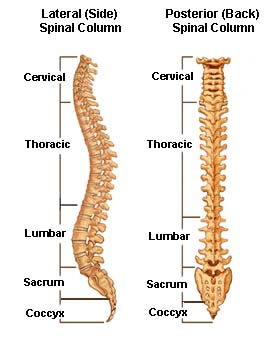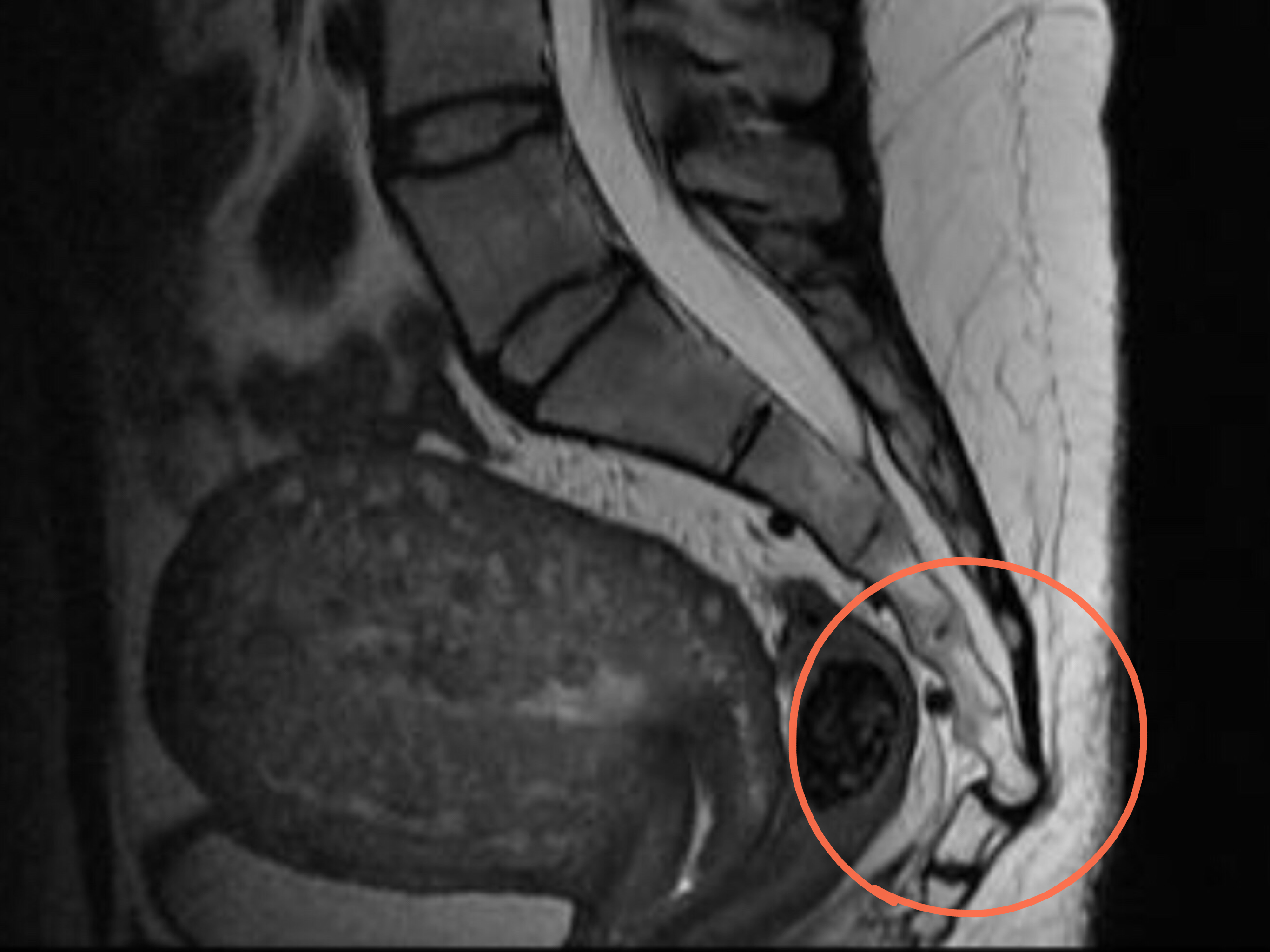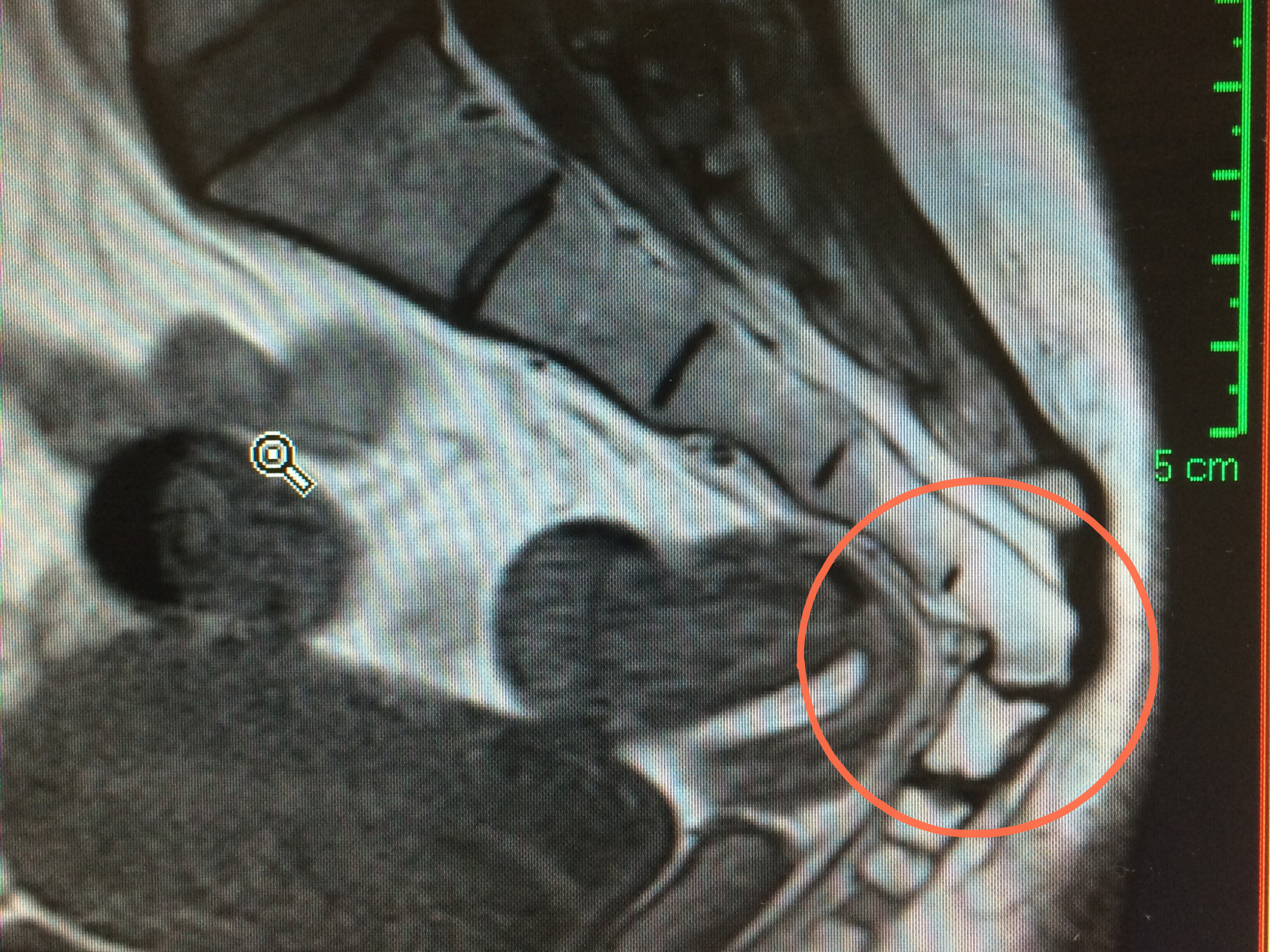What is Coccydynia
Coccydynia is the name given to pain (‘dynia’ means pain) felt over your coccyx (your ‘tailbone’).
The main symptoms of coccydynia is pain and discomfort felt at the base of your spine and particularly when sitting down.
What is the Coccyx?
The coccyx is located below the sacrum and is sometimes called the ‘tail-bone’. (See the diagram for the position of the coccyx in relation to the rest of the spine)
It is made up of between three and five fused or separate (coccygeal) vertebrae below the sacrum. The coccyx is attached to the sacrum by a joint that allows a small amount of movement between the sacrum and the coccyx.
The function of the coccyx is for support and stability when sitting and provides a site for ligaments, tendons and muscles to attach to.


This is a MRI showing the side on view of a ‘normal’ coccyx.

The MRI scan shows an ‘angulated’ coccyx which may have been caused by trauma.
What causes Coccydynia?
The MRI scan on the top left shows a normal looking coccyx.
Whereas the MRI scan on the bottom left shows a very angulated and abnormal looking coccyx. The angulated coccyx maybe a result of a fall onto the patient’s bottom.
Main causes of coccydynia:
1. Idiopathic coccydynia: This is the most common type of coccydynia and no-one really understands what causes it. Idiopathic means ‘unknown cause’ and occurs spontaneously. There are many theories as to why it occurs, for example, spasms of the pelvic floor muscles or referred pain from the lumbar nerves – although so far there is no real evidence to support any of the theories.
2. Trauma: The most common trauma is a fall on to the bottom. Accidents like slipping when walking down stairs, or falls when ice- or roller-skating or just slipping on a slippery floor are often the cause.
3. Childbirth: During childbirth there is pressure placed on the coccyx. During pregnancy, the joints and ligaments around the pelvis become more flexible, especially towards the end of pregnancy, to allow delivery of the baby, when the coccyx is pushed out of position. Some women start getting the coccydynia pain during the pregnancy, and some get it during or after delivery of the baby.
4. Less common causes:
- Nerve pain secondary to repeated damage
- Cyst formation
- Infection
- Lump around the region
- Obesity (due to excess pressure on the coccyx when sitting)
- Bursitis-like condition that can arise in slim patients who don’t have much fat padding on the buttocks which causes the tip of the coccyx to rub against the subcutaneous tissues, causing friction.
How is Coccydynia diagnosed?
Coccydynia is diagnosed mainly on the history of the symptoms and the examination.
X-rays and MRI scans are usually not very useful in the diagnosis of coccydynia and generally do not confirm the diagnosis, however, they can exclude any sinister causes for the symptoms and therefore can be very reassuring. In some cases, where trauma is the cause, there maybe changes seen on both the X-ray and MRI (like in the bottom MRI above)
Treatment:
Coccydynia is usually a self-resolving problem – although it can take a long time for symptoms to calm down. Very rarely do patients suffer after five years.
1) Painkillers.
2) Physiotherapy.
3) Coccygeal cushions (donut or horse-shoe shaped cushions) can help to relieve the pressure when sitting.
4) Coccygeal Injection with manipulation under anaesthetic. Coccygeal injections are done under X-ray guidance in the operating theatre to try and reduce the inflammation within the sacro-coccygeal joint and therefore reduce the pain. A reduction in pain following a coccygeal injection is also very helpful for diagnostic purposes as well as a treatment.
5) If all else fails, surgery maybe considered in the form of a Coccygectomy; an operation to remove the coccyx.


